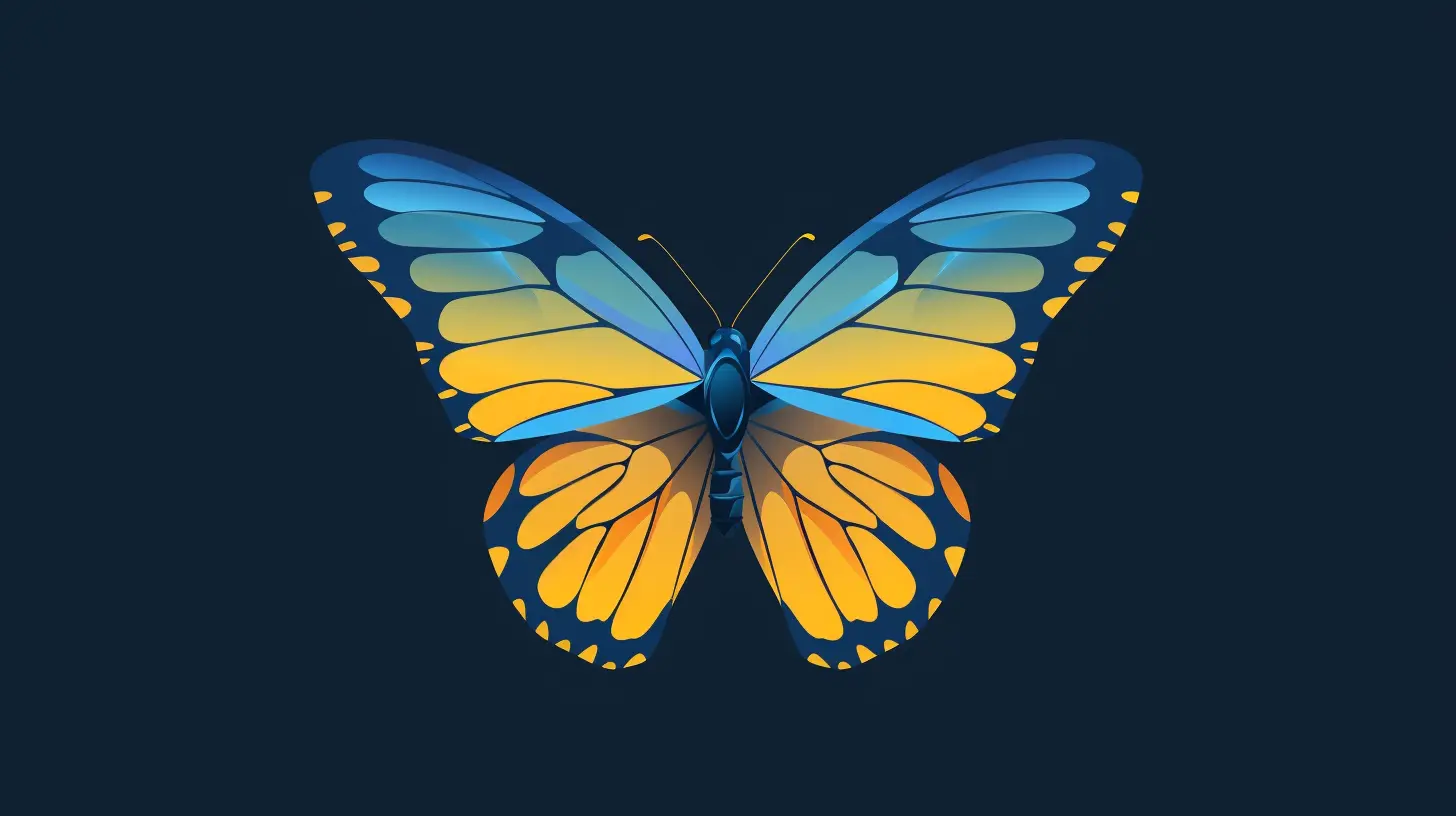Building Cross-Platform Apps with Flutter: A Comprehensive Guide
7 March 2025
In today’s fast-paced, mobile-first world, developers are constantly looking for ways to create high-quality apps that work on multiple platforms—without having to rewrite code for each one. If you’ve ever tried developing apps for both iOS and Android, you already know how much of a pain that can be. But here’s some good news: Flutter is here to save the day!
In case you’re asking, "What’s Flutter?" Flutter is an open-source UI software development kit (SDK) created by Google. It allows you to build natively compiled applications for mobile, web, and desktop from a single codebase. That means you can build cross-platform apps with ease, without sacrificing performance or user experience.
Whether you’re a seasoned developer or just getting started, this guide will break down everything you need to know about building cross-platform apps using Flutter.

What is Flutter?
At its core, Flutter is a framework that allows you to build apps for multiple platforms using a single programming language—Dart. But it’s not just any framework. Flutter gives you access to a rich set of customizable widgets that can mimic the native look and feel of both Android and iOS apps. Think of it as a Swiss Army knife for app development. It’s versatile, powerful, and, quite frankly, a game-changer.Unlike other frameworks that rely on web views to render content (like React Native or Ionic), Flutter compiles your code directly into native ARM machine code. This means apps built with Flutter tend to have smoother animations and faster performance.
Why Use Flutter for Cross-Platform Development?
So, why should you choose Flutter over other cross-platform development tools? Let’s dive into some of the key reasons why developers are flocking to Flutter:1. Single Codebase: You don't need to write separate code for iOS, Android, web, and desktop. Write once, deploy everywhere! Time is money, and Flutter saves you a ton of both.
2. Consistent UI Across Platforms: Flutter offers a uniform UI experience across different platforms, ensuring your app looks and feels the same whether it’s running on an iPhone or an Android device.
3. Hot Reload: This is one of Flutter’s most loved features. You can see the changes you make in real-time without restarting the app. It’s like having a magic wand for debugging.
4. Rich Widget Library: Flutter has a rich set of pre-designed widgets that are easy to customize. Whether you're building something basic or a complex app, Flutter’s widgets can handle it.
5. Performance: Since Flutter apps are compiled into native code, they perform just as well as apps built with platform-specific SDKs. You won’t have to worry about sacrificing speed for convenience.
6. Community & Ecosystem: With Google backing it, Flutter has a massive community and ecosystem. There are tons of libraries, plugins, and resources that make your life easier.

How Does Flutter Work?
You might be wondering, “How does Flutter manage to handle so many platforms with a single codebase?” The magic lies in Flutter’s architecture. Let’s break it down:- Dart Language: Flutter uses Dart, a programming language designed by Google. Dart is easy to learn and is optimized for building user interfaces. It compiles to native code, which helps build super-fast apps.
- Widgets: Flutter revolves around widgets. Everything in Flutter is a widget, from text to buttons to layouts. Widgets are like the building blocks of your app.
- Flutter Engine: Flutter’s engine is responsible for rendering the UI and handling things like animations and gestures. It ensures the app looks the same on all platforms.
- Platform Channels: Flutter allows you to communicate with native modules via platform channels. This means you can still access native APIs for iOS or Android if needed.

Setting Up Flutter: Getting Started
Alright, enough theory. Let’s roll up our sleeves and start building!Step 1: Install Flutter
Before you can start coding, you’ll need to install Flutter on your machine. Depending on your OS (Windows, macOS, or Linux), the installation steps may vary, but it’s pretty straightforward.1. Download the Flutter SDK for your platform.
2. Unzip the SDK and add it to your system’s PATH.
3. Run `flutter doctor` in your terminal to check if everything is set up correctly.
This command will check for any missing dependencies, like Android Studio or Xcode, and guide you through setting them up.
Step 2: Set Up Your IDE
Flutter works with multiple integrated development environments (IDEs), but the most popular ones are Android Studio and Visual Studio Code.- In Android Studio, install the Flutter and Dart plugins.
- In Visual Studio Code, you’ll need to grab the Flutter extension from the marketplace.
Once that’s done, you’re ready to start coding!
Step 3: Create a New Flutter Project
To create a new Flutter project, open your terminal and run:bash
flutter create my_flutter_app
This will generate a basic Flutter project for you, complete with a `lib` folder, `main.dart` file, and other necessary files.
Step 4: Run the Project
In your IDE, open the `main.dart` file, and you’ll see a simple app already written for you. To run the app, either use the “Run” button in your IDE or go back to the terminal and type:bash
flutter run
Boom! You’ve officially run your first Flutter app.

Building Your First Flutter App
So, you’ve set up Flutter. Now, let’s talk about building something a little more exciting than the default counter app.Creating a Simple To-Do App
Let’s build a basic To-Do app that works across iOS, Android, and web. This will give you a hands-on understanding of how widgets work together in Flutter.1. Define the UI: In Flutter, everything is a widget. You’ll want to create a layout using widgets like `Scaffold` (for the app’s structure), `AppBar` (for the header), and `ListView` (for displaying tasks).
2. Manage State: You can use `StatefulWidget` to manage the state of your app. In our To-Do app, we’ll keep track of the tasks in an array.
3. Add Interactivity: Use input fields like `TextField` to allow the user to add new tasks. You can also use buttons like `FloatingActionButton` to trigger actions.
Here’s a simplified version of what the app’s structure might look like in Dart:
dart
import 'package:flutter/material.dart';void main() {
runApp(MyApp());
}
class MyApp extends StatelessWidget {
@override
Widget build(BuildContext context) {
return MaterialApp(
title: 'To-Do App',
home: TodoList(),
);
}
}
class TodoList extends StatefulWidget {
@override
_TodoListState createState() => _TodoListState();
}
class _TodoListState extends State {
final List _tasks = [];
final _textController = TextEditingController();
void _addTask() {
if (_textController.text.isNotEmpty) {
setState(() {
_tasks.add(_textController.text);
_textController.clear();
});
}
}
@override
Widget build(BuildContext context) {
return Scaffold(
appBar: AppBar(
title: Text('To-Do List'),
),
body: Column(
children: [
Padding(
padding: const EdgeInsets.all(8.0),
child: TextField(
controller: _textController,
decoration: InputDecoration(hintText: 'Enter a task'),
),
),
Expanded(
child: ListView.builder(
itemCount: _tasks.length,
itemBuilder: (context, index) {
return ListTile(
title: Text(_tasks[index]),
);
},
),
),
],
),
floatingActionButton: FloatingActionButton(
onPressed: _addTask,
child: Icon(Icons.add),
),
);
}
}
Running on Multiple Platforms
Now that you’ve written your app, it’s time to see it in action across different platforms. To run it on Android, connect an Android device or start an emulator and type:bash
flutter run
To run it on an iOS device, you’ll need a Mac with Xcode installed. With an iPhone or simulator connected, simply run:
bash
flutter run
And for the web version? Just run:
bash
flutter run -d chrome
That’s it! You’ve successfully built a cross-platform app using Flutter.
Best Practices for Flutter Development
Before we wrap things up, let’s quickly cover some best practices to keep your Flutter code clean and maintainable:1. Organize Your Code: As your app grows, organize your code into separate files and folders. Don’t leave everything in `main.dart`.
2. Use State Management: For larger apps, consider using libraries like `Provider`, `Riverpod`, or `Bloc` for managing app state.
3. Test Your App: Flutter makes it easy to write unit, widget, and integration tests. Always test your code to ensure it works as expected on different platforms.
4. Optimize for Performance: Avoid building overly complex widgets, and use lazy loading techniques (like `ListView.builder`) to improve performance.
Conclusion
Congratulations! You’ve just taken a deep dive into building cross-platform apps with Flutter. Whether you’re building a simple to-do app or a complex enterprise application, Flutter’s flexibility, performance, and ease of use make it one of the best tools out there for cross-platform development.So, what are you waiting for? Go ahead and start building your next app with Flutter—you won’t regret it!
all images in this post were generated using AI tools
Category:
Software DevelopmentAuthor:

Adeline Taylor
Discussion
rate this article
17 comments
Jett McFadden
Great article! Flutter truly simplifies cross-platform development. Your insights will empower many developers to create amazing apps efficiently. Excited to see how this framework evolves! Keep up the great work!
April 6, 2025 at 3:33 AM

Adeline Taylor
Thank you so much for your kind words! I'm thrilled to hear that you found the article helpful. Excited to see where Flutter takes us too!
Sophia McEvoy
This article offers valuable insights into Flutter’s capabilities for cross-platform development. However, it could benefit from addressing potential pitfalls, such as performance trade-offs and platform-specific challenges. A nuanced exploration of these aspects would provide readers with a more balanced perspective on using Flutter.
April 5, 2025 at 6:49 PM

Adeline Taylor
Thank you for your feedback! I appreciate your suggestion and will consider including a discussion of potential pitfalls and challenges in future updates to provide a more balanced perspective.
Zorion Hall
Great article! Flutter truly makes cross-platform app development a breeze. With its intuitive design and robust features, you'll be creating stunning apps that shine on every platform in no time. Happy coding, and enjoy the journey of building with Flutter! 🚀
April 4, 2025 at 2:46 AM

Adeline Taylor
Thank you for your kind words! I'm glad you found the article helpful. Happy coding with Flutter! 🚀
Helen Lewis
Flutter streamlines cross-platform development with robust tools and flexibility.
April 1, 2025 at 8:37 PM

Adeline Taylor
Thank you! I'm glad you found the article helpful in highlighting Flutter's advantages for cross-platform development.
Astra McGowan
Ah, Flutter! Because why choose one platform when you can have a million quirks and headaches across all of them? Can’t wait to untangle this ‘comprehensive’ guide—sounds like a blast!
March 27, 2025 at 5:43 AM

Adeline Taylor
I appreciate your perspective! Flutter does come with its challenges, but the flexibility and potential for cross-platform development make it worthwhile for many developers. Happy untangling!
Tabitha Adkins
This article provides a solid overview of Flutter for cross-platform app development. It simplifies complex concepts and offers practical tips. However, a deeper dive into performance optimization and real-world case studies could enhance the reader's understanding and application of the framework.
March 26, 2025 at 9:11 PM

Adeline Taylor
Thank you for your feedback! I appreciate your suggestions on performance optimization and case studies, and I’ll consider incorporating them in future updates.
Paxton Cox
Great insights! Flutter truly simplifies cross-platform development, making it a top choice for developers.
March 21, 2025 at 4:47 AM

Adeline Taylor
Thank you! I'm glad you found the insights valuable. Flutter really does streamline cross-platform development!
Selene Adkins
Flutter’s promise of seamless cross-platform development is enticing, but what lies beneath the surface? As we build apps that transcend boundaries, can we truly balance performance and aesthetics? Dive into the intricacies and discover the hidden gems of Flutter that may redefine your coding journey.
March 20, 2025 at 3:23 AM

Adeline Taylor
Absolutely! Flutter offers a unique blend of performance and aesthetics through its widget-based architecture and GPU rendering. By exploring its rich set of tools and libraries, developers can achieve seamless cross-platform experiences while maintaining high performance and beautiful UI designs. Dive in to uncover these gems!
Blaze Lopez
Great insights! Excited to explore Flutter's capabilities!
March 17, 2025 at 3:26 AM

Adeline Taylor
Thank you! I'm glad you found the insights helpful. Enjoy exploring Flutter!
Norah Alvarez
Flutter represents a paradigm shift in app development, merging performance with aesthetic versatility. As developers navigate its capabilities, the real challenge lies in not just building apps, but crafting experiences that transcend platforms, fostering a seamless connection between users and technology regardless of device.
March 15, 2025 at 4:18 AM

Adeline Taylor
Thank you for your insightful comment! I completely agree—Flutter truly excels at creating cohesive user experiences across platforms while balancing performance and design. It's an exciting time for developers!
Brooke Potter
Insightful guide for streamlined cross-platform app development!
March 14, 2025 at 8:22 PM

Adeline Taylor
Thank you! I'm glad you found the guide helpful for cross-platform app development with Flutter!
Lira Harper
Thanks for sharing this insightful guide on Flutter!
March 13, 2025 at 8:26 PM

Adeline Taylor
You're welcome! I'm glad you found it helpful!
Blake Sullivan
This guide on building cross-platform apps with Flutter offers valuable insights for developers. It effectively balances technical depth with accessibility, making it suitable for both beginners and experienced programmers. The practical examples enhance understanding, showcasing Flutter's versatility in modern app development. Well done!
March 13, 2025 at 4:48 AM

Adeline Taylor
Thank you for your thoughtful feedback! I'm glad you found the guide valuable and accessible for both beginners and experienced developers. Your insights are greatly appreciated!
Simon Black
Absolutely thrilled to dive into this comprehensive guide on Flutter! 🎉 Excited to explore how it simplifies cross-platform app development. Let’s code! 🚀
March 12, 2025 at 5:30 AM

Adeline Taylor
Thank you! I'm glad you're excited about the guide. Happy coding! 🚀
Annette McCarron
Great insights! Flutter’s ability to create seamless cross-platform apps with a single codebase is impressive. This guide is a must-read for developers looking to optimize their workflow!
March 10, 2025 at 8:41 PM

Adeline Taylor
Thank you! I'm glad you found the guide helpful for optimizing your Flutter development workflow!
Reina McVey
Flutter makes cross-platform app development a breeze! Dive in and unleash your creativity!
March 8, 2025 at 3:27 AM

Adeline Taylor
Thank you! I'm glad you found the guide helpful. Flutter truly simplifies cross-platform development while allowing for great creativity!
Amber McCoy
This guide on building cross-platform apps with Flutter is incredibly insightful. It highlights Flutter's strengths and challenges, making it a valuable resource for developers at any level.
March 7, 2025 at 9:27 PM

Adeline Taylor
Thank you for your kind words! I'm glad you found the guide helpful and informative. Happy coding!
MORE POSTS

Building Ethical Machine Learning Models: Challenges and Best Practices

Wireless Earbuds That Double as Hearing Aids: A New Era of Innovation

The Role of 5G in Personal Data Privacy

Simplify Your Content Creation with These All-in-One Platforms

The Evolution of Machine Learning in Search Engine Algorithms

From Blog Posts to Vlogs: The Best Tools for Multi-Format Creators

Biometric Innovations: Unlocking Gadgets with a Glance

The Impact of Smart Home Devices on E-Commerce

The Importance of Regularly Updating Your Privacy Settings

Building Your First Web App with React

The Intersection of Machine Learning and Big Data